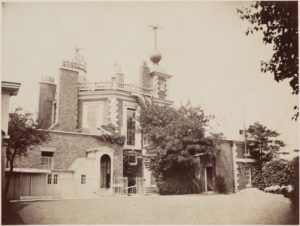Times Square Ball: The Story Behind the New Year Celebration
Watched around the world, the Times Square Ball Drop was inspired by a much older tradition.
By: Kelli Ballard | December 29, 2021 | 844 Words

(Photo by Tayfun Coskun/Anadolu Agency via Getty Images)
It’s time to welcome in a new year! People all over the world will be celebrating the beginning of a new year with many different traditions. But one ritual is so recognizable that people around the globe tune in to watch: the dropping of the New Year’s ball in New York City’s Times Square. It is so popular that nearly one billion people watch the ceremony each year. What is the Times Square Ball Drop and how did it come about?
Times Square Ball Drop History
In 1903, The New York Times moved its headquarters to a new skyscraper in Longacre Square, which was then renamed Times Square. To celebrate the new headquarters, a fireworks display was held on the roof just before midnight, December 31, 1903. The firework display became an annual New Year’s celebration, but in 1907, New York City banned fireworks. Adolph Ochs, the owner of The New York Times, hired Jacob Starr, a Ukrainian immigrant and metalworker who worked for Strauss Signs, to design a visual attraction to replace the fireworks. The result was a 700-pound iron and steel ball that dropped down a pole on the top of the building at midnight. This was the very first Times Square Ball Drop, and a ball has been dropped there every year since, except for during World War II when there was a limit on outdoor lighting.
Starr’s granddaughter, Tama, now owns his sign-making business. She has been around the legendary ball drop for decades, even having an important part in its ceremony. Speaking about the time when the ball was first dropped, she said:
“The idea was to … have it illuminated with the brand-new electricity that had just come up to the neighborhood. And it was lowered by hand … starting at one minute to midnight, and that was the way it was done for many years. It was an adaption of an old, useful thing. It was instantly popular. People just loved it.”
Since only about half of the homes had electricity in the early 1880s, seeing a glimmering ball lowering against the backdrop of dark night skies would have been enchanting and alien.

Times Square New Year’s Eve celebration (Photo by Roy Rochlin/Getty Images)
Tama shared her experience as a “timekeeper,” when she and her brother worked on the roof of One Times Square (the New York Times building). At 11:59 p.m. on New Year’s Eve, workers used a pulley system to lower the ball. It was her job to tell them when to speed up or slow down.
Since the first ball that weighed 700 pounds and used 25-watt lightbulbs, there have been seven different versions, each growing in size and glitz. Today, the Time Ball weighs 11,875 pounds and has more than 32,000 LED lights. There are about 3,000 pounds of confetti inside to be released at the stroke of midnight, as well as tens of thousands of notes with wishes of peace, hope, and love from people around the globe. The ball is raised at 6 p.m. on New Year’s Eve and at 11:59 p.m. it will drop to welcome in the New Year.
The Origin of the Time Ball
So, where did Starr get his idea for a Times Square Ball? Likely from a type of timepiece known as the “time ball.” Before modern computers, ship captains had to be very careful trying to dock their vessels, and a lot depended on the timing. While checking the stars is one way to navigate, a large time ball that dropped into position at the same time every day helped mariners keep up with local times.

The time ball on Flamsteed House at the Royal Observatory, Greenwich in the mid 19th century (Photo by SSPL/Getty Images)
Before we had cell phones and computers, telling the exact time wasn’t so easy, especially when local clocks in cities varied by several minutes. Onboard clocks could lose accuracy over a long voyage, too. “The correct time is very important to help sailors find their longitude,” Dr. Emily Akkermans, curator of time at the Royal Museums Greenwich, explained. The balls helped sailors make sure they had the correct time when sailing into a port. The first time ball in the world was put into place in Portsmouth, on England’s south coast, in 1829. And now, the timepiece has become a worldwide symbol of celebrating a new year.
“A minute outside of time” is how Tama refers to the year-end countdown where she and her brother kept watch to make sure the ball was being lowered at just the right time. She said:
“When you’re concentrating really hard, time seems to slow down. It felt like the longest minute in the world. It felt like you had time to wash your hair, call your mother, change your life. You really can change your life in one minute — you can decide to be different. You can decide to be kinder and better.”
















